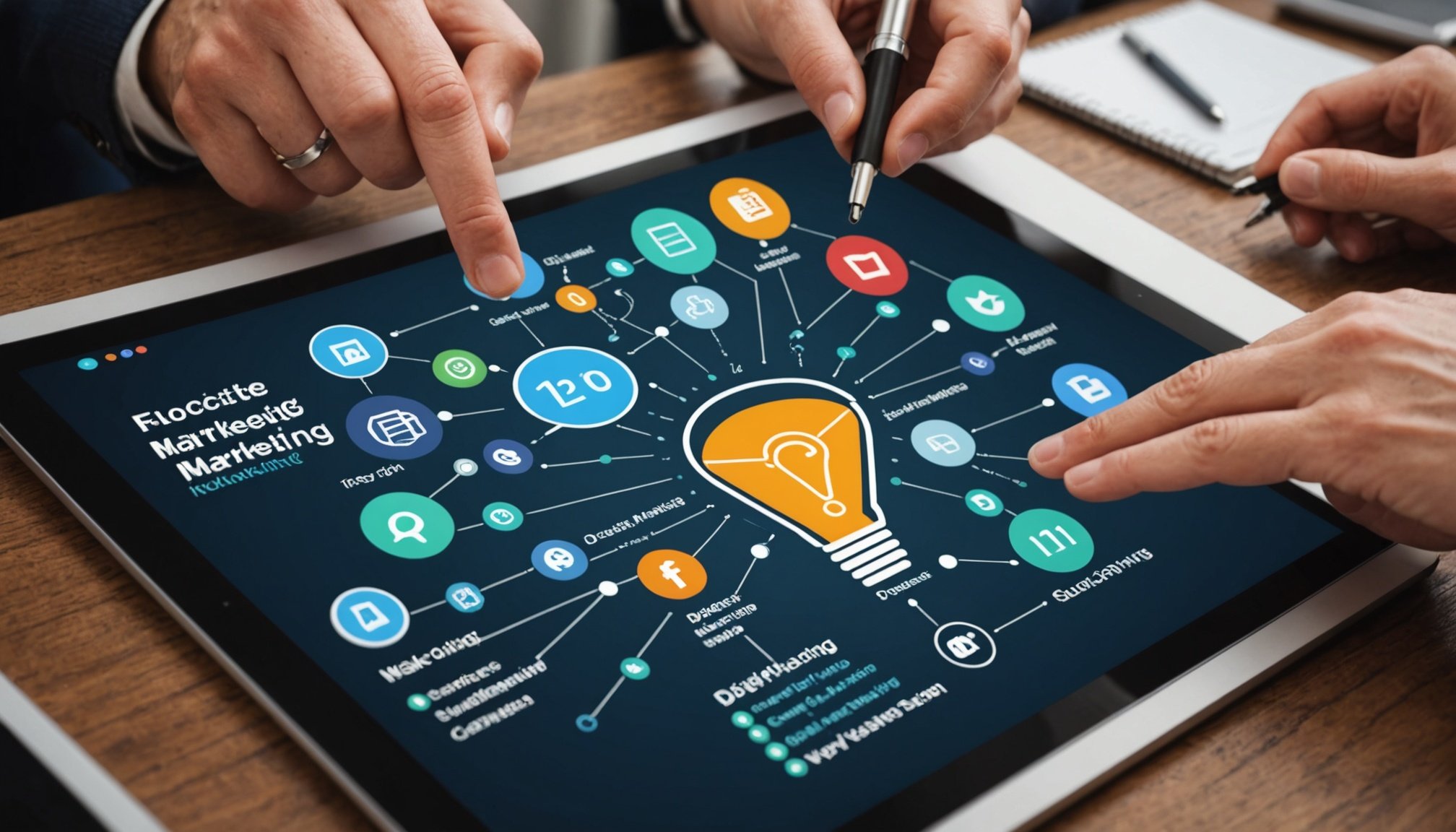Unlocking Success: Key Elements of an Effective Digital Marketing Funnel
In the ever-evolving landscape of digital marketing, understanding and optimizing your marketing funnel is crucial for driving conversions, enhancing customer engagement, and ultimately, boosting your brand’s success. Here’s a comprehensive guide to help you navigate the key elements of an effective digital marketing funnel.
Understanding the Marketing Funnel
Before we dive into the specifics, it’s essential to grasp what a marketing funnel is. A marketing funnel, or sales funnel, is a model that illustrates the customer journey from initial awareness to making a purchase. It is divided into several stages, each designed to guide potential customers through the buying process.
In parallel : Crafting a flawless omnichannel journey: strategies for businesses to engage customers
Stages of the Marketing Funnel
The marketing funnel typically consists of several stages:
- Awareness Stage: This is where potential customers first become aware of your brand, product, or service. Content such as blog posts, infographics, and educational videos are ideal here[1].
- Consideration Stage: At this stage, customers are evaluating different solutions to their problem. Content like whitepapers, case studies, and webinars can help inform their decision[1].
- Decision Stage: Here, customers are ready to make a purchase. Convincing content like testimonials, product demos, and special offers can seal the deal[1].
Segmenting Your Target Audience
To create an effective marketing funnel, you need to understand your target audience intimately. This involves segmenting your audience and creating detailed buyer profiles.
Also to discover : Exploring the advantages of building a brand community through social media marketing
Creating Buyer Profiles
- Demographics: Define the age, location, job title, and other characteristics of your target audience.
- Goals and Challenges: Identify what your audience wants to achieve and the obstacles they face.
- Content Preferences: Determine the type of content your audience prefers, such as videos, blogs, or case studies[1].
### Example of Buyer Profile
- **Demographics**: Health-conscious individuals aged 25-40.
- **Goals and Challenges**: Looking to improve fitness, struggling with motivation and time management.
- **Content Preferences**: Prefer videos, blog posts, and downloadable guides.
Aligning Content with the Customer Journey
Aligning your content with each stage of the customer journey is critical for guiding potential customers through the funnel effectively.
Types of Content for Each Stage
-
Awareness Stage:
-
Blog posts
-
Infographics
-
Educational videos
-
Social media posts[1].
-
Consideration Stage:
-
Whitepapers
-
Case studies
-
Webinars
-
Product comparisons[1].
-
Decision Stage:
-
Testimonials
-
Product demos
-
Special offers
-
Free trials[1].
### Example Content Map for a Fitness Brand
| Stage | Content Type | Example |
|
|-------------------------------|
|
| Awareness | Blog post | "10 Key Benefits of Daily Exercise" |
| Consideration| Downloadable guide | "Comparing Different Fitness Programs" |
| Decision | Testimonial video | "Success Stories from Our App Users" |
Setting Clear Objectives and KPIs
To measure the effectiveness of your marketing funnel, you need to set clear objectives and track relevant Key Performance Indicators (KPIs).
SMART Objectives
- Specific: Clearly define what you want to achieve.
- Measurable: Ensure the objective can be quantified.
- Achievable: Make sure the objective is realistic.
- Relevant: Align the objective with your overall business goals.
- Time-bound: Set a specific timeframe for achieving the objective[2].
KPIs for Each Stage
-
Awareness Stage:
-
Website traffic
-
Social media engagement
-
Search volume related to your brand[2].
-
Consideration Stage:
-
Lead generation
-
Cost per lead (CPL)
-
Time spent on the website[2].
-
Decision Stage:
-
Conversion rates
-
Customer acquisition cost (CAC)
-
Customer lifetime value (LTV)[2].
### Example KPIs
| Stage | KPIs | Description |
|
|------------------------------|
|
| Awareness | Website traffic | Number of visitors to your website |
| Consideration| Lead generation | Number of leads generated |
| Decision | Conversion rates | Percentage of leads converting into customers |
Using Tools and Models to Optimize Your Funnel
Utilizing the right tools and models can significantly enhance your marketing funnel’s efficiency.
Content Mapping Models
- Use tools like Google Sheets, Airtable, or specialized software to create and manage your content map. This visual representation helps you see which content aligns with each stage of the customer journey[1].
CRM and Marketing Automation
- Tools like HubSpot and Salesforce can help you track prospects, segment them, test different nurturing approaches, and analyze the results. Combining a robust CRM with marketing automation tools allows you to personalize campaigns, refine segments, and optimize the conversion funnel[2].
Analyzing Data for Continuous Improvement
Analyzing both quantitative and qualitative data is essential for optimizing your marketing funnel.
Quantitative Data
- Conversion rates
- Number of leads
- Revenue generated
- Time spent on the site
- Pages visited[2].
Qualitative Data
- Customer feedback
- Satisfaction scores
- Social media engagement
- User survey responses[2].
### Example of Data Analysis
- **Quantitative**: A 40% increase in traffic is positive, but if the bounce rate increases, it indicates a relevance issue. Testing the content of your landing pages, their ergonomics, or your offer is necessary.
- **Qualitative**: High engagement on social media but low conversion rates might indicate that your content is engaging but not persuasive enough.
Calculating ROI for Each Action
Regularly evaluating the Return on Investment (ROI) for each marketing action helps in optimizing your strategies.
ROI Calculation
- ROI = (Net profit generated by the marketing investment / Cost of the marketing investment) × 100
Tracking ROI monthly or weekly helps in observing progress, identifying optimization opportunities, and planning future tests[2].
Testing as a Key Component of Your Strategy
Continuous testing is vital for refining your marketing funnel.
A/B Testing and Experimentation
- Test different content types, CTAs, and landing page designs to see what works best.
- Use A/B testing to compare the performance of different elements and make data-driven decisions[2].
Personalizing the Customer Experience
Personalization is key to making your customers feel valued and understood.
Personalized Campaigns
- Use email marketing campaigns that respond to specific interests or past behaviors.
- Tailor your website content to guide new visitors differently from repeat customers[1].
### Example of Personalization
- **Email Campaigns**: Send personalized newsletters based on customer preferences and past interactions.
- **Website Content**: Use cookies to identify repeat visitors and offer them content that is more relevant to their interests.
Creating an effective digital marketing funnel is a multifaceted process that requires careful planning, execution, and continuous optimization. By segmenting your audience, aligning content with each stage of the customer journey, setting clear objectives and KPIs, and using the right tools and models, you can significantly enhance your marketing efforts.
As a marketer, it’s crucial to remember that the customer journey is not a one-time event but an ongoing process. By continuously analyzing data, calculating ROI, and testing different strategies, you can refine your marketing funnel to achieve higher conversion rates and build a loyal customer base.
In the words of a seasoned marketer, “The key to a successful marketing funnel is not just about driving traffic, but about guiding potential customers through a journey that resonates with their needs and preferences. It’s about creating a seamless, engaging experience that turns visitors into loyal customers.”
By following these principles and staying adaptable to the ever-changing digital landscape, you can unlock the full potential of your marketing funnel and drive lasting success for your brand.











